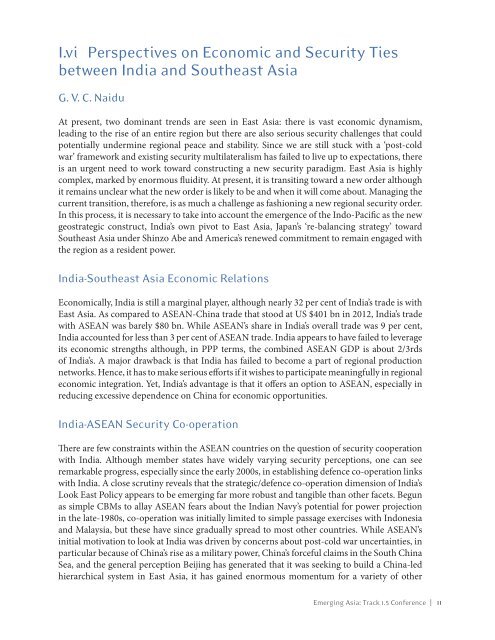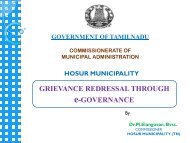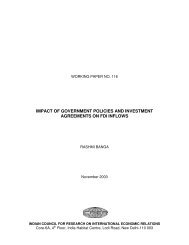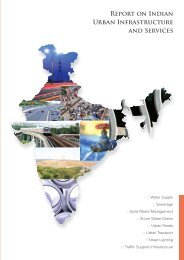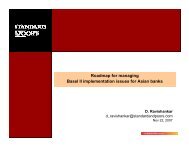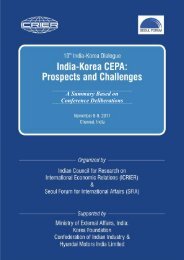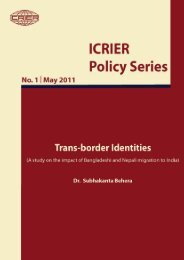Asia's Arc of Advantage - icrier
Asia's Arc of Advantage - icrier
Asia's Arc of Advantage - icrier
You also want an ePaper? Increase the reach of your titles
YUMPU automatically turns print PDFs into web optimized ePapers that Google loves.
I.vi Perspectives on Economic and Security Ties<br />
between India and Southeast Asia<br />
G. V. C. Naidu<br />
At present, two dominant trends are seen in East Asia: there is vast economic dynamism,<br />
leading to the rise <strong>of</strong> an entire region but there are also serious security challenges that could<br />
potentially undermine regional peace and stability. Since we are still stuck with a ‘post-cold<br />
war’ framework and existing security multilateralism has failed to live up to expectations, there<br />
is an urgent need to work toward constructing a new security paradigm. East Asia is highly<br />
complex, marked by enormous fluidity. At present, it is transiting toward a new order although<br />
it remains unclear what the new order is likely to be and when it will come about. Managing the<br />
current transition, therefore, is as much a challenge as fashioning a new regional security order.<br />
In this process, it is necessary to take into account the emergence <strong>of</strong> the Indo-Pacific as the new<br />
geostrategic construct, India’s own pivot to East Asia, Japan’s ‘re-balancing strategy’ toward<br />
Southeast Asia under Shinzo Abe and America’s renewed commitment to remain engaged with<br />
the region as a resident power.<br />
India-Southeast Asia Economic Relations<br />
Economically, India is still a marginal player, although nearly 32 per cent <strong>of</strong> India’s trade is with<br />
East Asia. As compared to ASEAN-China trade that stood at US $401 bn in 2012, India’s trade<br />
with ASEAN was barely $80 bn. While ASEAN’s share in India’s overall trade was 9 per cent,<br />
India accounted for less than 3 per cent <strong>of</strong> ASEAN trade. India appears to have failed to leverage<br />
its economic strengths although, in PPP terms, the combined ASEAN GDP is about 2/3rds<br />
<strong>of</strong> India’s. A major drawback is that India has failed to become a part <strong>of</strong> regional production<br />
networks. Hence, it has to make serious efforts if it wishes to participate meaningfully in regional<br />
economic integration. Yet, India’s advantage is that it <strong>of</strong>fers an option to ASEAN, especially in<br />
reducing excessive dependence on China for economic opportunities.<br />
India-ASEAN Security Co-operation<br />
There are few constraints within the ASEAN countries on the question <strong>of</strong> security cooperation<br />
with India. Although member states have widely varying security perceptions, one can see<br />
remarkable progress, especially since the early 2000s, in establishing defence co-operation links<br />
with India. A close scrutiny reveals that the strategic/defence co-operation dimension <strong>of</strong> India’s<br />
Look East Policy appears to be emerging far more robust and tangible than other facets. Begun<br />
as simple CBMs to allay ASEAN fears about the Indian Navy’s potential for power projection<br />
in the late-1980s, co-operation was initially limited to simple passage exercises with Indonesia<br />
and Malaysia, but these have since gradually spread to most other countries. While ASEAN’s<br />
initial motivation to look at India was driven by concerns about post-cold war uncertainties, in<br />
particular because <strong>of</strong> China’s rise as a military power, China’s forceful claims in the South China<br />
Sea, and the general perception Beijing has generated that it was seeking to build a China-led<br />
hierarchical system in East Asia, it has gained enormous momentum for a variety <strong>of</strong> other<br />
Emerging Asia: Track 1.5 Conference | 11


